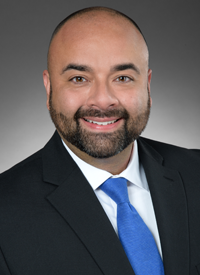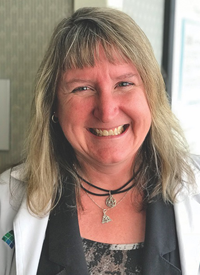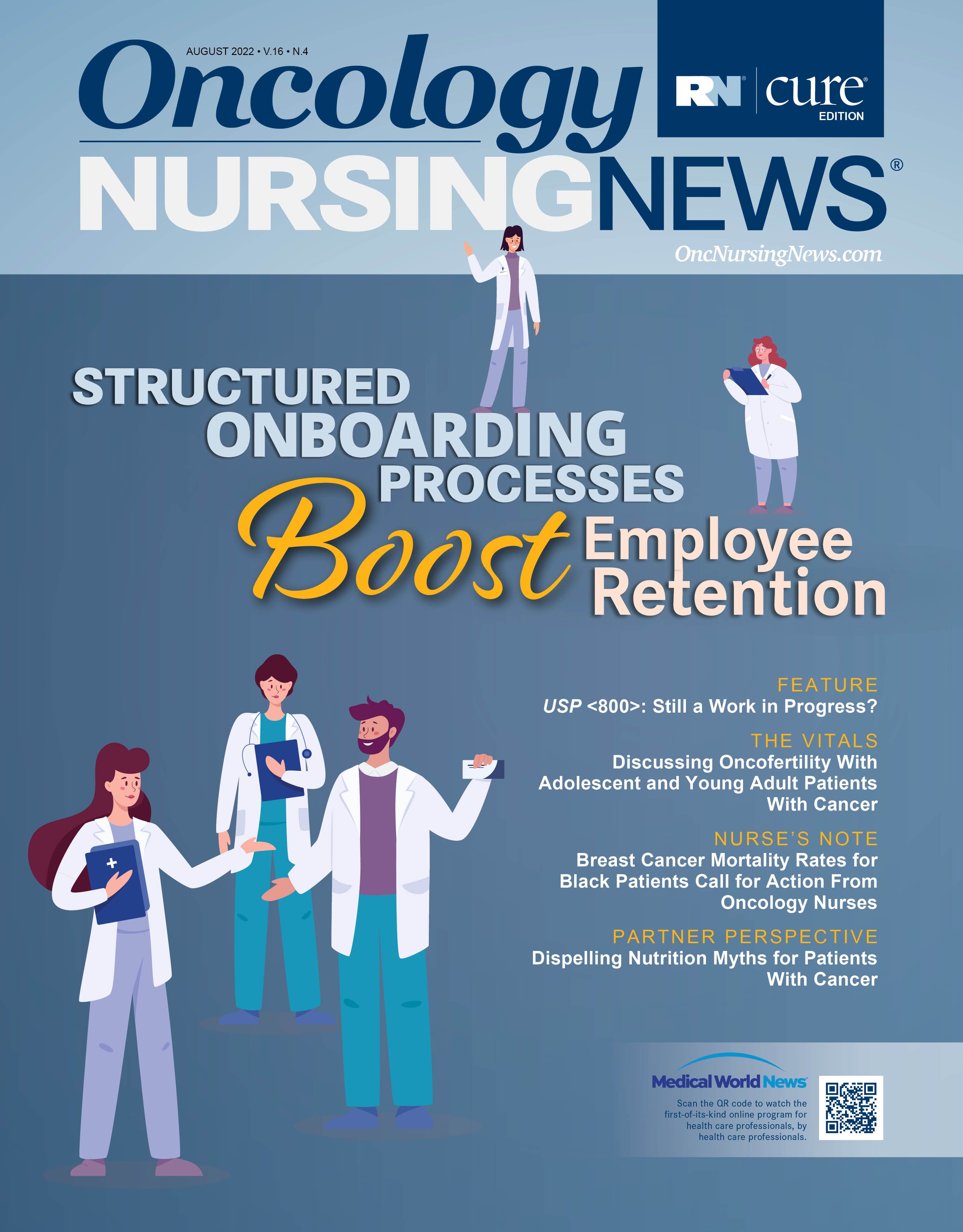Structured Onboarding Processes Boost Employee Retention
In an unprecedented age of health care burnout, hospital administrators may need to think outside of the box to find ways to engage and support employees.
The great resignation, spurred by the COVID-19 pandemic, has taken an enormous toll on the nursing field.
In a poll conducted in September 2021, results showed that 20% of health care professionals had abandoned their position since February 2020.1,2 Furthermore, a report examining labor trends in 2020 found that 24% of all hired nurses leave their position within 1 year of being hired.3 Coupled with increasing demand and a depletion of resources, many units are losing nurses and other staff at an unsustainable rate.
From a financial perspective, the average cost of a single bedside registered nurse (RN) turnover is $40,038, and cost of turnover per health care system for every 1000 nurses hired is $9,609,120.3,1
Nicola Stewart, MHL, RN-NC, BSN, OCN

Although there is no single solution to address the staffing crisis, institutions can start with the onboarding process to better engage and retain employees. Solidified onboarding processes, structured mentorship programs, and clear pathways for career development are crucial factors in ensuring that new hires feel valued and supported.
“Once you invest in a person—through the process of hiring, interviewing, bringing them through a solid orientation—you show them that you want them to stay,” Nicola Stewart, MHL, RN-NC, BSN, OCN, a complex gastrointestinal cancer nurse navigator at Methodist Healthcare at Sarah Cannon Cancer Institute in San Antonio, Texas, explained in an interview with Oncology Nursing News®. “[It is important] to focus on that individual and to create a family atmosphere. It is how you inspire loyalty and how you create a support system at work.”
Stewart joined Lance Ortega, MBA, BSN, RN, OCN, director of nursing services at Texas Oncology in Dallas; and Lyndsey Conway, MN, RN, BMTCN, of Seattle Cancer Care Alliance in Washington, in a presentation at the 2022 Oncology Nursing Society Congress.1 Their presentation, “Mission Possible: Enhancing Oncology Nurse Recruitment and Retention,” highlighted the causes of RN turnover, including stress, burnout, inflexibility, lack of representation, too much overtime, and external competition. They also presented opportunities for institutions to address those root causes. One of those considerations is through enhanced onboarding strategies and ongoing developmental support.
Lance Ortega, MBA, BSN, RN, OCN

“There is no 1 magical fix to correct these issues,” Ortega said in an interview with Oncology Nursing News®. “The series of events that led us here, as an industry and profession, [was] complex, longstanding, and sometimes subtle but profound. That means our solutions to these dilemmas will need to be creative, innovative, and more outside-the-box than ever before. The solutions will also not occur overnight or even on the first attempt, and our path forward will be long and very difficult at times. However, for the sake of our patients and the overall health care system, we need leaders and organizations [to be] committed to and engaged in changing the face of nursing for the future in such a way that we reinvigorate our staff to remember their reasons why they became, and continue to be, a nurse.
Invest in Mentorship
One critical aspect of a good onboarding program is mentorship, Stewart explained in the presentation.1 Everyone needs guidance, new nurses especially, and the key to ensuring this is through a well-defined mentorship program, she said. Preceptors from different units should be intentionally matched to preceptees and rotated among different preceptees during orientation to expose a new hire to multiple people because, as Stewart explained, 1 person never has all the answers.
Incentivizing mentors and preceptors with bonuses helps ensure that teachers are enthusiastic about educating the new nurses. “Identifying mentorship opportunities and having a good, quality preceptor [is critical],” Stewart said. In addition, training preceptors on how to mentor and instruct new staff by providing clear guidelines and expectations for the onboarding process should be a key pillar of the program. Regular check-ins to evaluate the progress of the trainee, as well as the enthusiasm and desire of the mentor to continue precepting, are also important.
“Even the best preceptors need breaks from time to time,” Ortega said, adding that “new nurses need methodical and unrushed onboarding with a preceptor who is willing and wanting to onboard these nurses in an environment that is as conducive to learning as possible.”
But what does that process look like?
A methodical and unrushed program, according to Ortega, comprises evidence-based materials and competency cutoffs that have been vetted by those currently performing the role. The program should have a timeline for milestones that is both realistic for the position and tailored to the new nurse’s learning style and experience level. Furthermore, Ortega said, environment should be a key consideration when thinking about onboarding. A busy or chaotic floor or unit may not be conducive to learning and development. Identifying floors or areas that are ideal for training and onboarding can contribute to an improved overall learning environment.
Stewart also recommended building the team through enthusiasm and positivity. She acknowledged that it is a difficult time to work in nursing, and that listening to colleagues and supporting them is important to show them that you are there for them.
“Once you create that family and that bond, relationships have been created. It’s difficult to [want] to walk away from that,” Stewart said. Finally, investing in an individual and their future with their company is a great way to establish a desire to continue with the company. “Appreciate the loyalty, offer longevity bonuses, and be there for one another,” Stewart said.
Structured Ambulatory Training
Anna Vioral Gavin PhD, MEd, RN, OCN, BMTCN

“When I moved to ambulatory oncology, there was [no] infrastructure built for onboarding oncology nurses,” Anna Vioral Gavin, PhD, MEd, RN, OCN, BMTCN, reflected in an interview with Oncology Nursing News®. “It’s taken us 3 years to get to where we are today—to build the infrastructure to properly onboard an oncology nurse—with 26 geographically dispersed locations.”
Vioral, who is director of oncology practice and professional development at the Allegheny Health Network Cancer Institute in Pittsburgh, Pennsylvania, helped to launch a successful oncology practice and professional development program at her institution with a focus on building resiliency in the ambulatory setting.
One challenge was how to centralize an innately decentralized onboarding experience. This led to the development of the Oncology Professional Proficiency Initiative, an individualized onboarding experience within the Allegheny Health Network.
“In-patient [nursing] has a lot in infrastructure for onboarding, but ambulatory settings tend to be all over the place,” Vioral said.
Vioral’s professional development team meets with new oncology nurses during the week following their initial hire, along with the preceptor and the manager. The novice nurses are asked to complete a self-assessment of skills and past experience, which provides direction for what they should be focusing on in their biweekly meetings.
“If they’ve been starting [intravenous infusions] IVs for 20 years, we spend [approximately] 10 minutes with them teaching them our way,” Vioral explained. “Whereas, if they’ve not done certain types of infusions, then we spend that time working on those infusions.”
The biweekly meetings are scheduled over 90 days, and during that time the new hires are expected to meet the rudimentary goals of oncology nursing. Another unique piece of the proficiency initiative is that in the first 2 weeks of onboarding, the nurses’ main responsibility is to learn more about the roles in the institute and the locations.
“[New nurses] are assigned a role observation for their location. For example, if they were hired into medical oncology, they have a document that has them sit with each role in each department, including medical oncology, radiation oncology, support care services, hematology, and gynecologic oncology,(surgical oncology, is optional). They will sit with the front desk for anywhere from 30 minutes to 2 hours; they will go with the medical assistant; they will go with the clinical pharmacists and watch how [prescriptions] are prepared, verified, and mixed. They [will gain an understanding of] the timeframe of why things take solong back there with certain drugs. That helps them in the front end, when they’re administering [drugs, because] they understand the workflow process of the office. [Nurses will] follow a physician and an advanced practice nurse. They even spend a full day in radiation oncology observing the workflows there. And then we set up informal connections with all our supportive care services,” Vioral said.
Trainees receive a document that helps them identify who are the institute’s genetic counselors, who are members of nutritional services, etc. This becomes an additional resource for them, allowing them to know who plays what role in the institute. The team also hosts an “Oncology Interprofessional Onboarding Course,” which is held every month for all new hires across the cancer institute. The first 4 hours encompass soft skills; such as conflict resolution, de-escalation, and communication skills however, the afternoon features breakout discipline-based sessions. For nurses, there is a special emphasis on supportive care therapies and nononcology infusions, as well as oncologic emergencies and management of patients with cancer.
Notably, all new hires are all expected to test out of the chemotherapy program, even if they arrive with a chemotherapy card.
“This serves as a bridge into how we do things here,” Vioral explained. “Even if they’ve been an oncology nurse for 30 years, it gets them used to our organization and how we do things.”
The program has been fruitful. Many recently hired nurses shared in an anonymous survey that the program not only helped them feel supported and confident to independently care for their patients, but they also felt it built their resilience.
One nurse said that the Allegheny Health Network onboarding experience helped them “bounce back from difficult situations because the training taught how to step back and remain calm to handle patients professionally and efficiently.” Other new hires’ responses stated that the program was “incredibly helpful” in becoming familiar with “all the roles involved with the Allegheny Health Network team” and let them focus on the areas they individually needed assistance with.1
One nurse shared that the program helped build resilience by assuring new hires that the role takes to time to adapt to; another shared that they really appreciated the fact that someone was consistently checking up with them to ensurethey understood their role.
“This onboarding program was the best I’ve ever had,” one respondent shared.
When it comes to training, faster isn’t always better, according to Vioral. Hasty training can lead to attrition if employees do not feel they have the resources to successfully do their job.
“I love patients, but staff is what makes the difference,” Vioral, who has worked in patient care for more than 33 years, said. “If an employee is not [properly] trained, [does] not like what they are doing, or we are not meeting their needs, they are going to leave—which [affects] the quality of care we give to our patients.”
Room for Flexibility
When employees leave, Vioral’s team needs to bring more nurses in and train them, which can be costly. This can be another barrier to care. However, whenever the opportunity presents itself, Vioral will try to shift a nurse to a new area rather than see them leave. “So rather than lose them from the organization, I will do everything in my power to get them to stay,” Vioral said.
When first initiating this program, something that Vioral frequently was asked was, “Why are you stealing my nurse?”
“That was a huge barrier,” she said. “I would say, ‘I’m not stealing your nurse.
It’s an oncology nurse with a very sound understanding of oncology. They’re going to leave if they lose interest.’” Vioral noted, “We have medical oncology, surgery, chemo, nurse navigation….We have so many opportunities. Some nurses do not want to move up; they want to stay lateral and move into different roles and learn them. We’re professionally developing them into a new area of nursing.”
When you move nurses and do not have to retrain new nurses, you save yourself money and time and become more efficient, Vioral said.
The decision to allocate sources to the outpatient setting can sometimes be a hurdle, she added. Inpatient services may feel as though the time and money spent on training is a loss to their department. However, according to Vioral, “The outpatient setting is where oncology is now. It is not all inpatient nursing anymore. If you have an oncology nurse who wants to do that, they are going to go to another organization or ambulatory to get what they need.” Ultimately, lateral moves are a way to retain nurses across the institution, she said.
Similarly, Stewart emphasized the need to look at an individual’s potential growth beyond their current position during the onboarding process. “A new patient care assistant on their first day could be the future chief nursing officer,” Stewart said. “You never know what [individuals] will want to do in the future and what capabilities they possess. You want to grow these [employees] and avoid turnover so you can build within for generations to come.”
“Investing in our nurses is key to future retention,” Ortega said. “If you survey most nurses, specifically surrounding their reasons for staying with their current company, the vast majority of them will say their coworkers and patients keep them there. Strategies for retaining nurses needs to focus on those areas as a foundation and expand from there. So I think about things [such as] increased educator positions and roles to engage and knowledge- share experiences with the staff and even patients. Survey the nurses to see what is most appealing to them. This could include things [such as] different scheduling options, retention bonuses, different salary models, new workflows and staffing patterns.”
Overall, experts agreed that engagement is at the heart of retention. Listening to new nurses and acting on their behalf goes far in making them feel heard and valued. By investing at the beginning, most organizations will see increased loyalty and, ultimately, boosted retention.
REFERENCES
1. Ortega L, Stewart N, Conway L. Mission possible: enhancing oncology nurse recruitment and retention. Presented at: 47th Annual Oncology Nursing Society Congress; April 27-May 1, 2022, Anaheim, CA.
2. Galvin G. Nearly 1 in 5 health care workers have quit their jobs during the pandemic. Morning Consult. October 4, 2021. Accessed July 14, 2022. https://morningconsult.com/2021/10/04/
health-care-workers-series-part-2-workforce/
3. NSI National Health Care Retention & RN Staffing Report. NSI Nursing Solutions, Inc. Accessed July 11, 2022. https://www.nsinursingsolutions.com/Documents/Library/NSI_ National_Health_Care_Retention_Report.pdf



